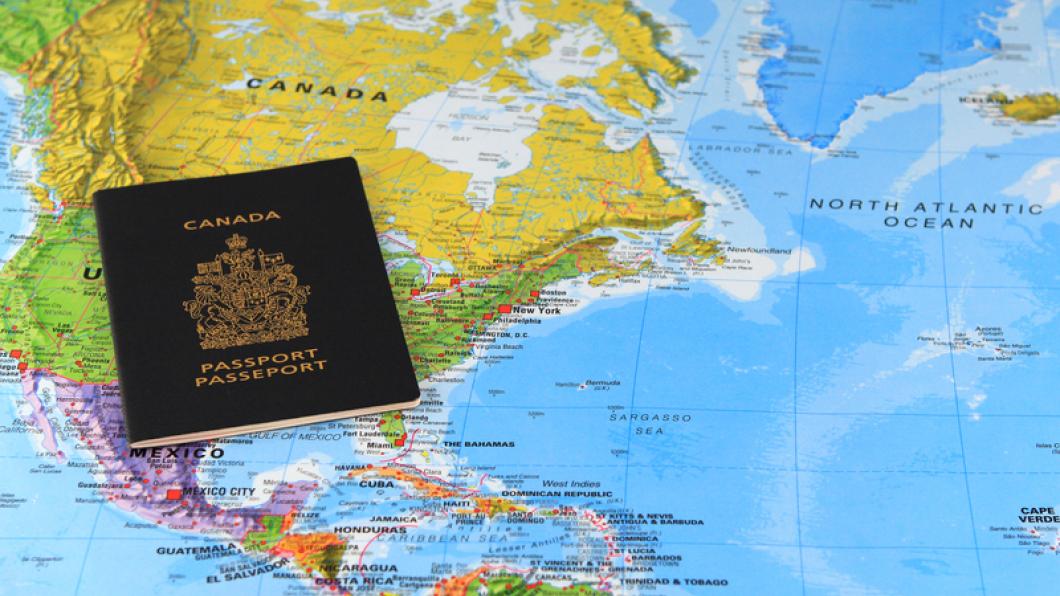
Canada requires a wheelchair headrest to be hidden in a passport photo. Why?
By Louise Kinross
Early this month, I tweeted about how Service Canada rejected a photo for a Toronto teen’s passport because it included his wheelchair headrest in the background.
That teen was Jacob Trossman, 17, who has a neurodegenerative condition and no independent movement. He can’t sit without his wheelchair.
According to his mother Marcy White, a Costco photographer spent an hour, up on a chair, trying to get the shot at an angle, while passersby watched. But the result still included the headrest, and was refused. “It caused my son distress, manipulating him into what the photographer thought was an acceptable position,” she says.
My tweet led to a flood of tweets from other parents of children with disabilities who said they, too, had had photos rejected due to the headrest. One father said he had to resort to holding his child’s head till the last second, then “letting go,” because a parent's hands are not allowed in the photo. Another parent wrote that their child couldn’t meet the facial requirements due to a facial difference.
We thought it was worth looking at the photo requirements posted by the Canadian government.
The basics are that your eyes are open, your mouth closed and not smiling, and there be a plain white background.
Under a section called “Wheelchairs,” it says “We recommend that your photo be taken with a plain white blanket placed over it behind your head…This makes sure that your facial features and edges of your face are clear.”
In response to my tweet, Service Canada confirmed this: “Our colleagues at Passport recommend that a white blanket be placed on the back portion of the chair behind the person’s shoulders.”
Why is this necessary?
Jacob will always present in an airport in his wheelchair. That is an accurate representation. So why would it be valuable for airport security to have a photo with his wheelchair headrest “whited out?”
We noticed that Canada makes exceptions on facial clarity by allowing people to wear glasses, or hats or head coverings for religious or medical reasons.
We found it interesting that a pass is given to glasses—which are arguably, not difficult to remove, and don’t pose injury when you remove them. But not for a wheelchair headrest, which supports someone who can’t hold their head up.
Also, if you can wear a head covering for medical reasons, why not a headrest behind your head for medical reasons?
Many wheelchair users consider the wheelchair a part, or extension, of their body. In writing about people who learn to use wheelchairs after a spinal-cord injury, researchers in the book Rethinking Rehabilitation write: “They are enwheeled, that is, they are in the process of re-embodiment as they live with, from and through the body-chair.” Asking a disabled person to obscure their wheelchair is akin to asking a person to cover a body part.
One parent questioned whether she might be asked to “cover” her son’s autism with a white blanket.
In addition to the white blanket, Service Canada tweeted: “A signed medical note stating the person cannot sit unsupported is also recommended.”
Given how inaccessible our cities are, why does a disabled person have to make an extra doctor’s visit to get a passport photo? Do we ask people who wear glasses to get a special note from their doctor documenting that they need them?
Wheelchairs are prescribed by health professionals in Ontario. Those clinicians don't prescribe devices for people who don't need them.
The reason Jacob needed his passport in the first place was that he was granted a wish to travel to see dolphins swimming.
Since we first tweeted the story, Service Canada reached out to Marcy, and granted the family an exception to use the existing photo of Jacob.
But what about all of the other people with disabilities who won’t be so lucky? Why does Canada make getting a passport so onerous for someone with a disability?